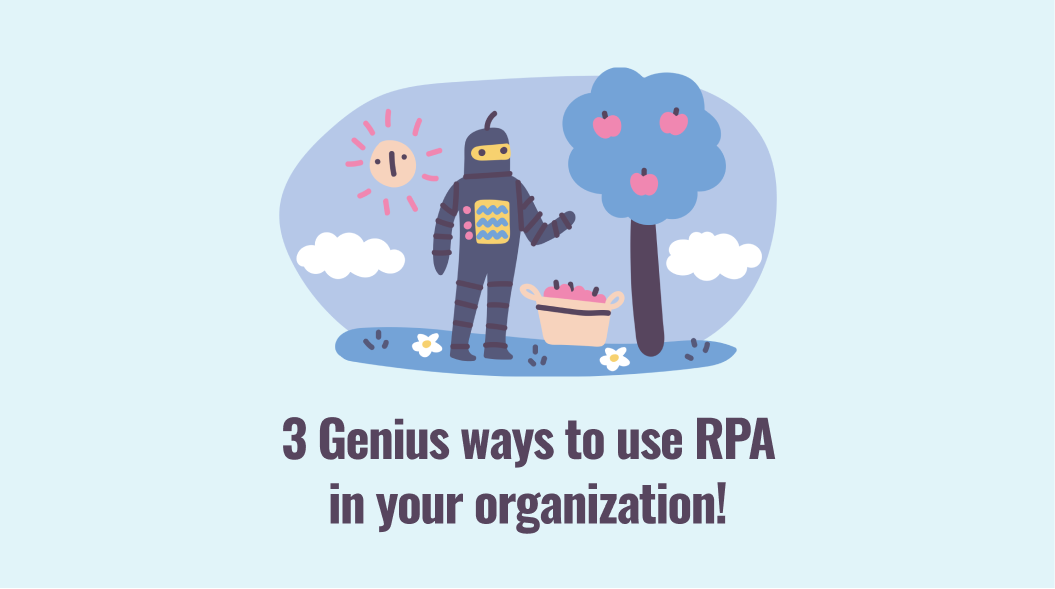RPA can help your organization handle data 10x times better. Read to explore the different ways.
Robotic Process Automation, otherwise, RPA is here to stay. It’s been aiding organizations cut down cost and increase efficiency which only adds to the growing list of why RPA should be on top of every organization’s priorities.
It has created a new way of process and working in various industries from healthcare, banking to education and insurance. Now, the industry is ready to incorporate RPA with other technologies to bring you the best of both worlds.
In this blog, let’s dive deep in some of those case studies ranging from social marketing to data science and see how we can implement them in our organizations.
Social marketing and RPA
Social media comes with an unlimited amount of opportunities. An eighth of the world’s population uses Instagram alone and this increases every year. This is just Instagram. But we have Facebook, Twitter, etc. which serve a similar purpose. But for this use-case, I will just focus on Instagram.
Say, an average-sized clothing company has an active Instagram account where they post three images targeting different demographics every day and has at least 4000 comments. If we consider that 10% of them are expressing an interest in the garment in the picture. That is over 1200 comments to respond back for that day’s post alone.
But responding to these can easily be done with RPA. The robot can listen for new comments, messages to the profile and when the comments or the messages have a set of predetermined words, the robot can respond back to the user with an appropriate response from the preset template from the organization and direct the user to the executive for specific requests.
This does not limit to just new inquiries but also complaints, faq, etc.
Which brings us to the next application,
RPA and Chatbots
Customers are everything to a business. The experience a business provides to the customer defines whether the customer prefers this business and a large part of this experience is defined by the service the business caters after the sale of the product and RPA can help with creating an excellent customer experience.
The future belongs to self-service and in a good way. With an increasing amount of customers reaching out to customer service, the demand for more efficient customer management grows. This is often measured by how fast and competent their service is. This is where the chatbots powered by RPA come in.
In this case, let’s assume that an electronics company is planning to implement a customer service bot that will handle the faqs, warranty management and setting up appointments for service. While the chatbots can handle the conversation with the client, the Robot can extract the necessary data from the given information such as the product code, date of purchase, etc. , process the information for warranty information, fill applications, set up services, create an entry in the database.
The RPA bot can further update the database depending on the stage the customer or the product is in, update the database with relevant information and send the invoice, emails, etc. to the customer.
This is a simple example of how organizations can build a great customer experience from start to finish.
RPA and Data science
Data Science helps organizations determine the optimized solution for a problem, for example determining the best season or ideal time frame to invest in a particular resource. Together with RPA, we can create a complete solution wherein the former determines the what and when while your Robots carry out the actual process, ie, the How.
Robots can be configured in such a way to place orders, collect invoices and manage inventory, etc. while the Data science aides the RPA with deciding when to order to achieve maximum ROI.
A great example of this case would be the stock inventory of a factory that requires materials throughout the year to maintain a constant supply for their customers. RPA can efficiently manage the inventory and feed the data for optimization. In turn, the system returns the required data which the robot uses to run the process again, here, it could be the time frame and the amount to be ordered.
These are just simple examples of what RPA is capable of, working hand in hand with another tech. To understand RPA more, head over to this section.
Up next
Dummies Guide to Delegation in Swift Skcript
/svr/3-genius-ways-to-use-rpa-in-your-organization/
/svrmedia/heroes/[email protected]
Skcript
/svr/3-genius-ways-to-use-rpa-in-your-organization/
/svrmedia/heroes/[email protected]
